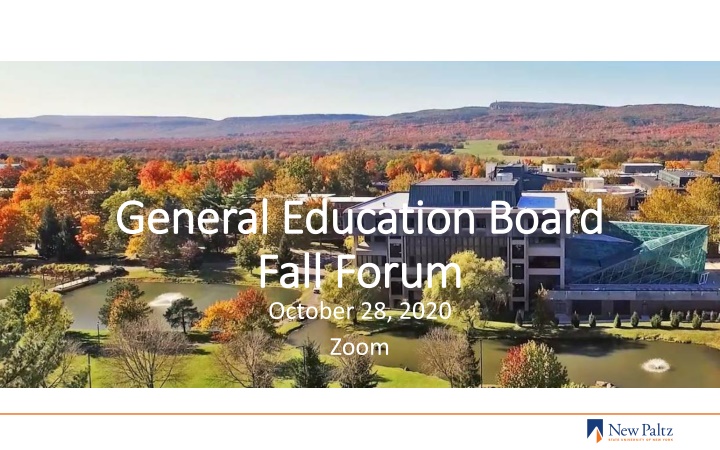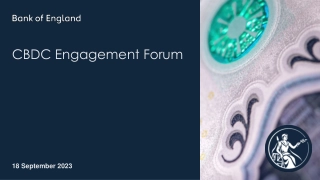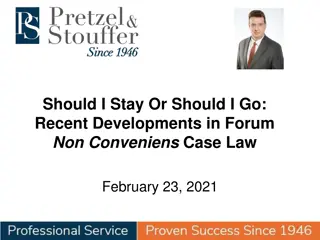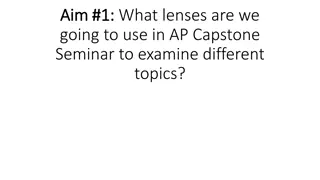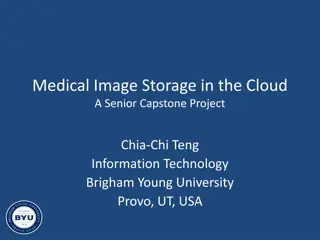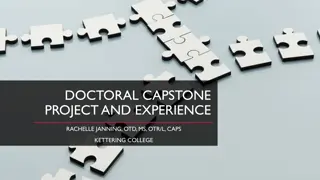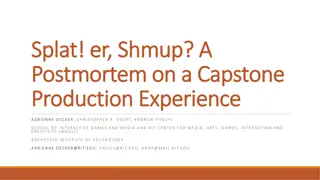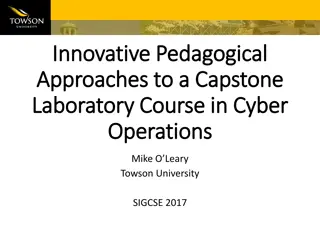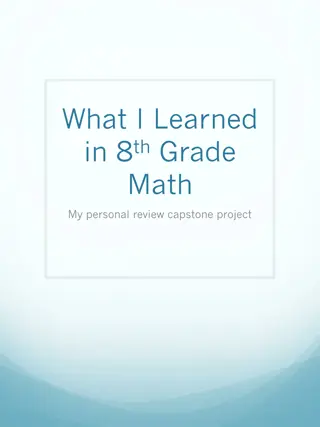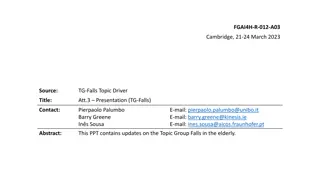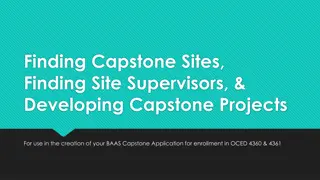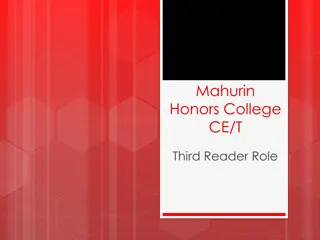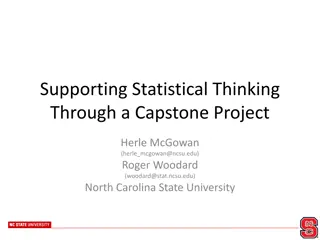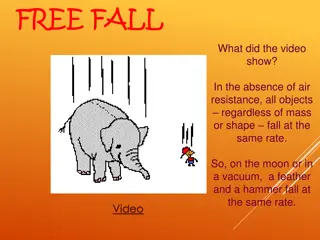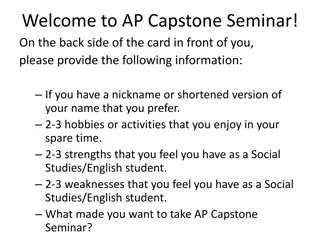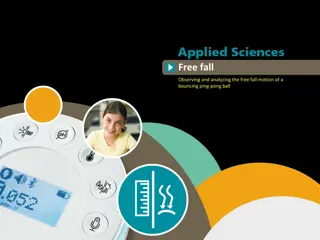Fall Forum Capstone Assessment Overview
Today's discussion involves the new capstone model for GE assessment and the upcoming Spring 2021 assessments. The overview of the new capstone assessment, approved by faculty, details the process from Fall 2019 to Spring 2020. An example essay prompt for Humanities is provided along with a rubric for assessing answers. This assessment aims to evaluate students' understanding of the humanities.
Download Presentation

Please find below an Image/Link to download the presentation.
The content on the website is provided AS IS for your information and personal use only. It may not be sold, licensed, or shared on other websites without obtaining consent from the author.If you encounter any issues during the download, it is possible that the publisher has removed the file from their server.
You are allowed to download the files provided on this website for personal or commercial use, subject to the condition that they are used lawfully. All files are the property of their respective owners.
The content on the website is provided AS IS for your information and personal use only. It may not be sold, licensed, or shared on other websites without obtaining consent from the author.
E N D
Presentation Transcript
General Education Board General Education Board Fall Forum Fall Forum October 28, 2020 Zoom
Todays discussion 1. Discussion of the new capstone model for GE assessment A. B. C. Why we changed the assessment model What the results from Spring 2020 tell us How we should respond to these results 2. Split into working groups to discuss Spring 2021 assessment A. B. C. United States Studies World Civilizations Basic Communications Oral
Overview of New Capstone Assessment Approved by faculty at 4.3.19 Senate Meeting Implemented for the first time during the 2019 2020 school year Process overview: 1. Fall 2019: GE faculty develop essay prompts/questions and a rubric based on SLOs. 2. Spring 2020: about 25% of students in capstone classes participate in assessment. Groups of 5 faculty assessors review responses for each content area. Instructors teaching in assessed GE categories participate in a brief survey. 3. GE board analyzes and reports data to faculty connected to content areas.
Example: essay prompt for Humanities Choose a text or work of art from the humanities (e.g. a novel, short story, poem, visual art, piece of music, film, play, philosophical dialogue or essay, historical text, etc.) that you can describe and analyze in some detail and, ideally, that you studied in the GE course that you took in the Humanities category. Analyze how the text or work of art reflects on some aspect of the human experience, using the conventions or methodology appropriate to that work, to the best of your ability. As a guideline, spend 5-10 minutes brainstorming so you can remember details and find the language to describe your example, then spend 25-35 minutes writing an essay of no more than 3 pages that does all of the following: Describes the main point or features of the chosen text or work of art and provides some context. What type of text or work is it? Who wrote or created it? What is it about? What categories, genres, or concepts would you apply to it? What is its historical or cultural context? Applies your knowledge of the methods or conventions of the relevant discipline (e.g. literature, philosophy, art history, music, theater arts, media studies, political science, black studies, WGSS, etc.) to analyze and explain the significance of this item for understanding the humanities. How does this work exemplify the insight, power, or meaning of the humanities? What theories, methods, or approaches help us to understand it? For example, you might use formalist analysis (explication) to consider how a poem depicts or critiques issues of gender or politics, give a formal analysis and interpretation of a visual work of art to illustrate the value of artistic expression, explain how a specific philosopher approaches an enduring question about human existence, discuss how a play or film subverts a plot convention to achieve a particular dramatic effect, or analyze how a theory in political science challenges the concept of human nature or the purpose of democracy.
Humanities Rubric Rubric for assessing answers: Any answer that matches four or more of the criteria for a particular learning outcome MEETS that learning outcome. Matching three or fewer criteria counts as DOES NOT MEET that outcome. Learning outcome: demonstrates knowledge of the conventions and methods of at least one of the humanities 1. Describes the main point or features of a text or work of art in humanities Y / N 2. Applies appropriate categories, genres, or concepts Y / N 3. Explains its historical or cultural context Y / N 4. Uses a convention or methodology from a relevant discipline to analyze it Y / N 5. Analysis makes connections that demonstrate an understanding of the humanities Y / N
Comparison with the old model New capstone model of assessment Students submit an essay outside of their GE class. Data is collected from students at the capstone level, which means we get information near the end of their education. A team of volunteers from different disciplines who teach in that GE category assesses the student essays. More collaborative. Students a part of assessment process. Data intends to measure the student s education as a whole at the university level. Previous model of assessment Student work was collected from GE classes by the instructor. Often students take GE courses in their first two years, so the data collected is from the beginning of their education. The instructor who teaches the course evaluates how many students meet, approach, or do not meet the SLO for that GE category. Students unaware of assessment. Data provides a snapshot from specific classes.
A. Why we changed to the capstone model Faculty labor Less work for adjuncts and lecturers Stipends for assessors Encouraging interdisciplinary dialogue across GE Faculty developing prompts/assessing responses converse about commonalities across disciplines within GE categories Goals of assessment Determine if students mastered the content and skills of a liberal arts education Obtain information about student learning across their entire education, rather than a snapshot from one particular class
Capstone assessment aims to measure student learning across their education as a whole SUNY New Paltz s General Education (GE) program lays the foundation for students' intellectual development by providing a broad knowledge base, essential communication skills, and opportunities to explore new perspectives, ways of thinking, arguing, and being. (From GE website newpaltz.edu/GE)
B. Results from Spring 2020 assessment Summary of results from capstone classes (Humanities, Western Civilization, Social Sciences, and Natural Sciences) Faculty observations in administering the assessment in their capstone classes and their suggestions for improving the process Data from faculty survey (You can view all of the above in the report that Associate Provost Laurel Garrick Duhaney compiled and distributed)
GE Category Learningoutcome % met Humanities Students will demonstrate knowledge of the conventions and methods of at least one of the humanities in addition to those encompassed by other knowledge areas required by the General Education program. 47% Western Civilization Student will demonstrate knowledge of the development of the distinctive features of the history, institutions, economy, society, culture, etc., of Western civilization. 63% Western Civilization Students will relate the development of Western civilization to that of other regions of the world. 34% Social Sciences Students will demonstrate understanding of the methods social scientists use to explore social phenomena, including observation, hypothesis development, measurement and data collection, experimentation, evaluation of evidence, and employment of mathematical and interpretive analysis. 73% Social Sciences Students will demonstrate knowledge of major concepts, models and issues of at least one discipline in the social sciences. 65% Natural Sciences Students will demonstrate understanding of the methods scientists use to explore natural phenomena, including observation, hypothesis development, measurement and data collection, experimentation, evaluation of evidence, and employment of mathematical analysis. 39% Natural Sciences Students will demonstrate application of scientific data, concepts, and models in one of the natural (or physical) sciences. 56%
Important notes about this data For Humanities, Western Civilization, and Social Sciences, students wrote essays. However, instead of essays, some students wrote letters of protest or general praise for their professors or the GE class they took. These essays were counted (as Does Not Meet ), which is why the number of essays that met the SLO s for those categories were lower than expected. The assessment for Natural Sciences included a fact-based quiz and an essay. The assessment team for Natural Sciences gave each essay an effort score to filter out essays that had no substance. This practice could be applied to the other subject areas. This assessment model is new and we are still learning how to implement it and interpret the data in ways that are helpful for measuring student learning and developing GE curriculum.
Observations from faculty who administered the assessment in capstone classes Some students were confused about what they were being asked to do and why The assessment was for a different class, unrelated to the class they were in (e.g. students in a science capstone course may be asked to complete a essay to demonstrate their competency in the Humanities SLO) Students often do not remember what GE course they took and are confused about why they are being tested on it years later Some students found the assessment interesting while others said it was meaningless or pointless Some students found the prompts broad and difficult or the instructions too wordy and unclear
Faculty Comments about Improving the Assessment Take-home exam or online, not in class Give students the chance to comment on the prompts and on GE Mitigate the element of surprise that students showed by informing them about the assessment in their classes and explain the value of the information Do not encourage students to write about an example from a GE course, but instead something they could comment on insightfully Concerns about the timing and effectiveness
C. How should we respond to these results? Refine the process for administering the assessment Revise instructions and prompts for assessment Refine the rubrics for assessing the essays based on what data would be most helpful Discuss what to do with protest essays. Measure and track their frequency? Discard essays that show no effort? Communicate the new assessment process and its goals more Find meaningful ways to include student input in the assessment process Other ideas?
Breakout Groups Brainstorm ideas for new assessment prompts (World Civilizations, US Studies, Basic Communication-Oral) Steve will place you in a group via Zoom Do you have a group preference? Tell us in the chat
